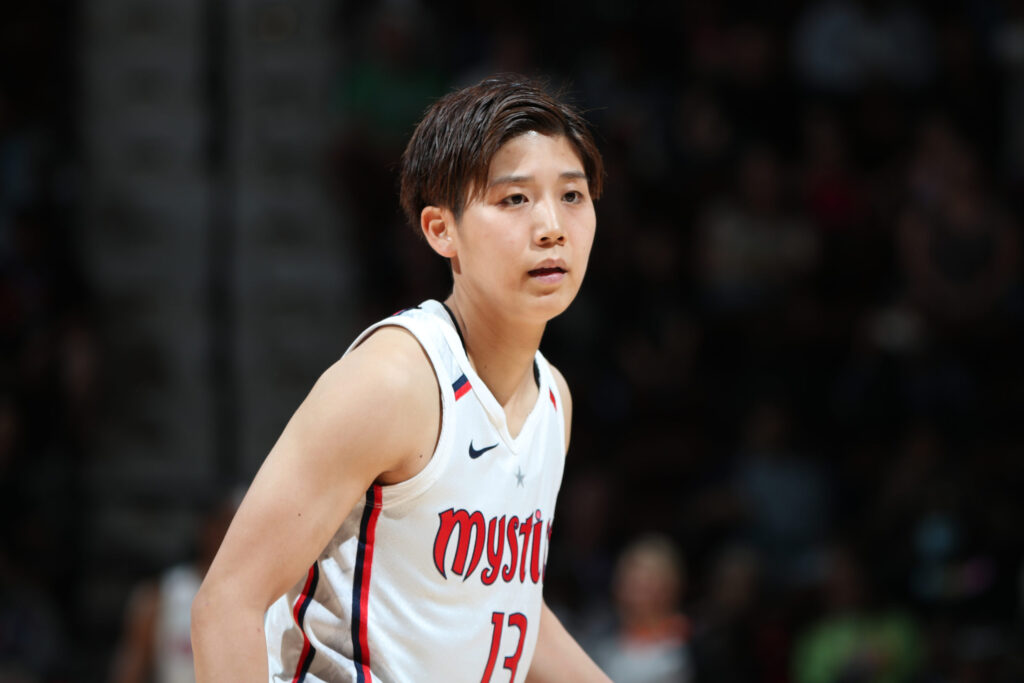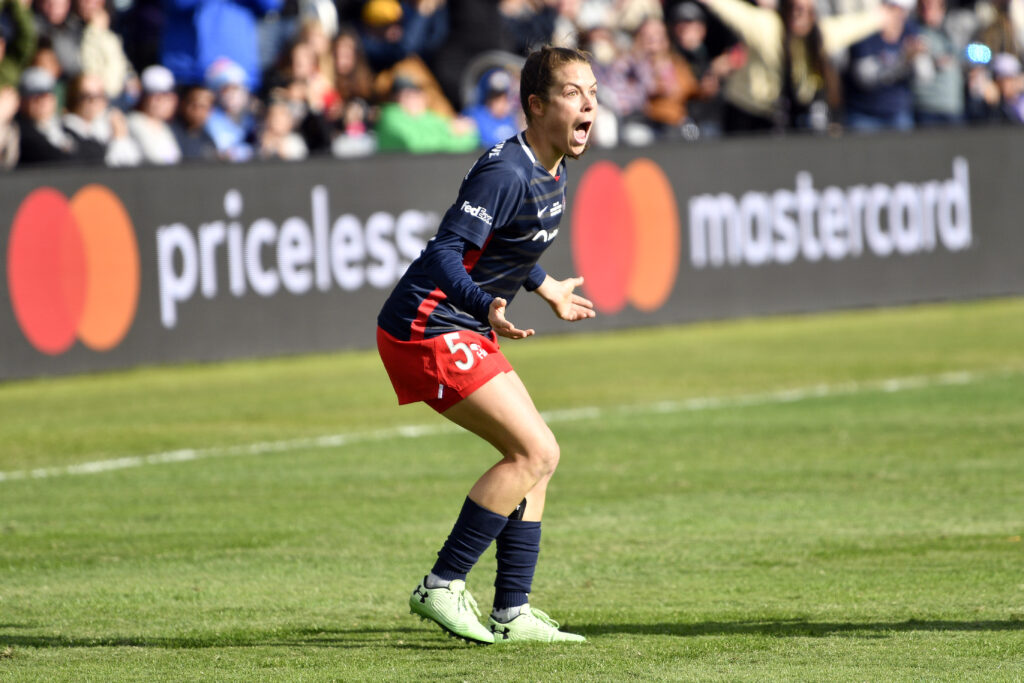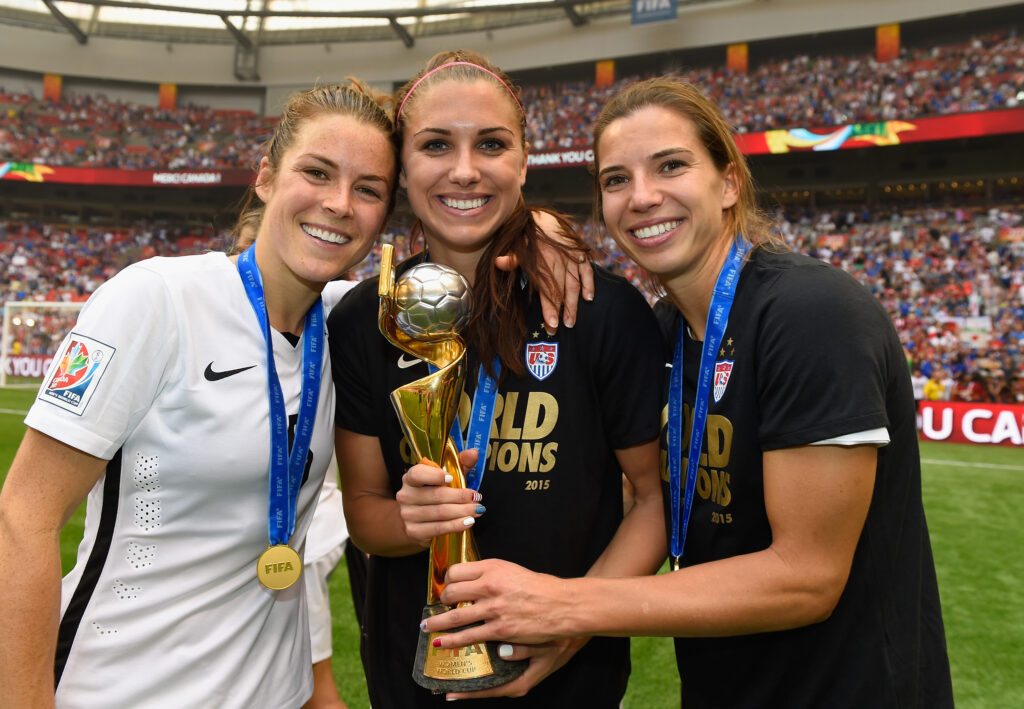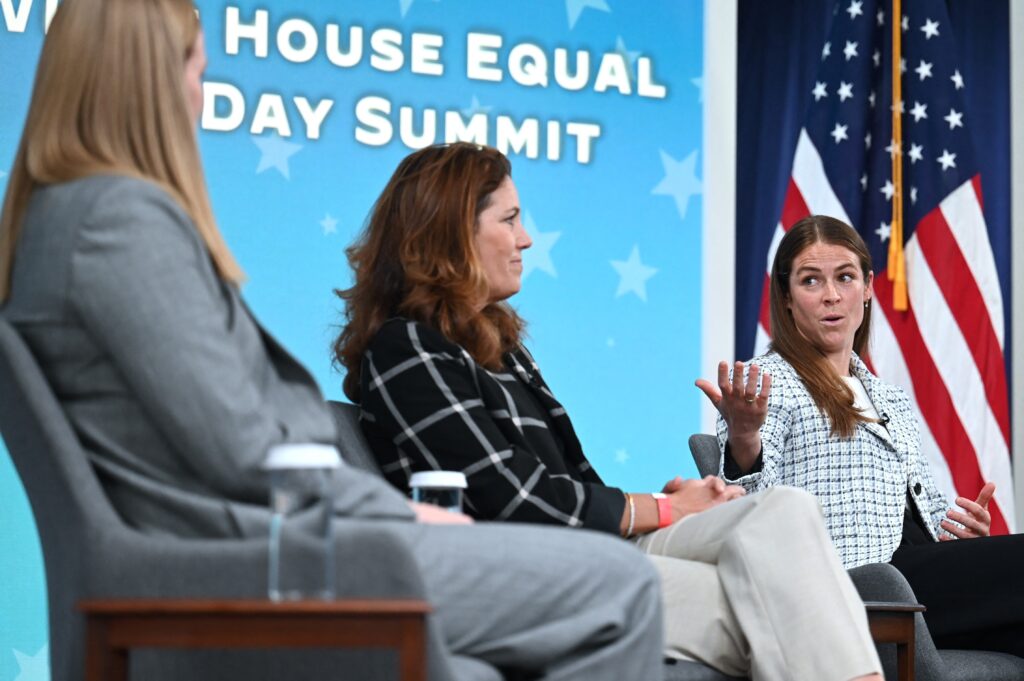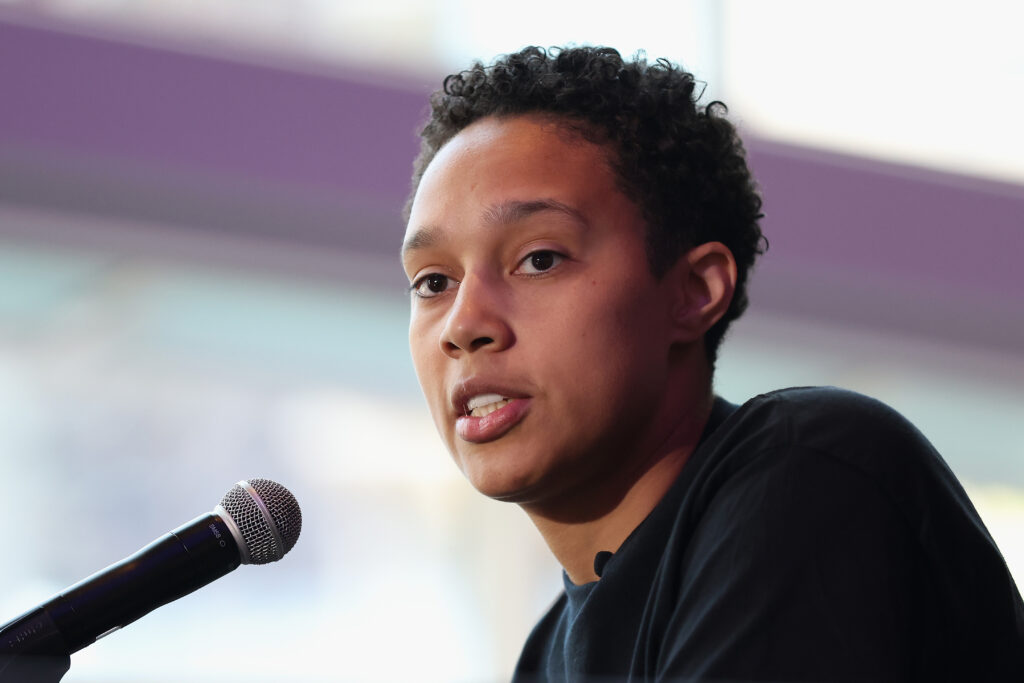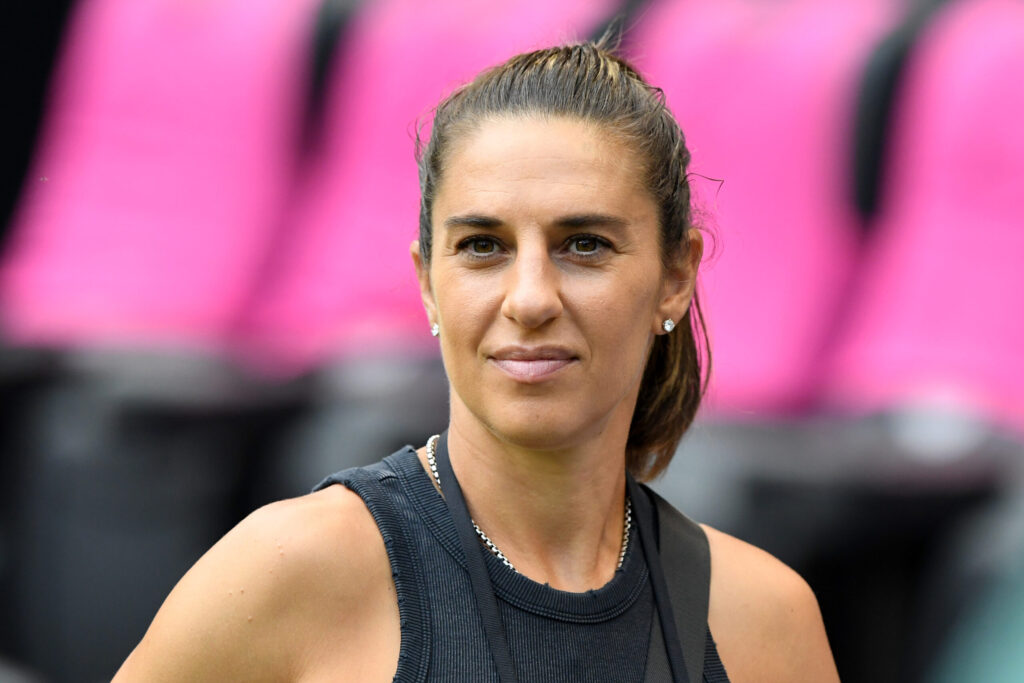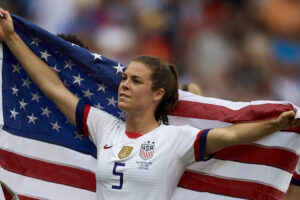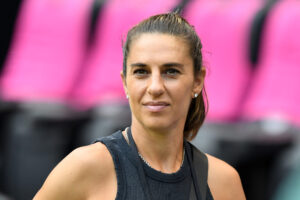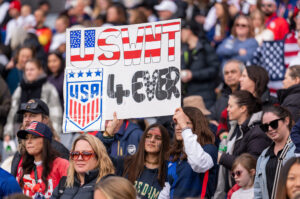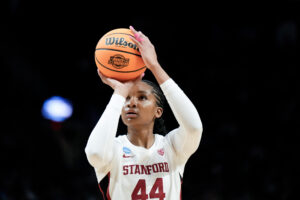Have you ever thought about having a regular conversation with a WNBA player? Say, over coffee or just hanging out at a backyard barbecue? That’s the kind of vibe I’m aiming for with And One — a regular series for Just Women’s Sports involving 10 questions. I ask about basketball things, of course, but also about their lives off the court so you can get to know the players of the WNBA a little bit better.
The first thing I noticed about Rui Machida during our Zoom interview is that she smiles a lot. Sitting next to her English translator, Mikki Takei, at a conference table, she fielded every question and dished out answers as comfortably and as swiftly as she passes the ball on the court. She also giggles often, and it’s easy to see why her Washington Mystics teammates enjoy her presence both on the floor and in the locker room.
Machida, 29, has played for the Fujitsu Red Wave in the Women’s Japan Basketball League since 2011. When head coach Mike Thibault reached out to her with an opportunity to join the Mystics this season, she jumped at the chance. The women’s basketball world was first introduced to Machida in the 2016 Summer Olympics in Brazil. She raised her profile even further at the Olympics last summer in her home country of Japan, where the 5-foot-4 guard set an Olympic record with 18 assists in Japan’s 87-71 semifinal win over France. With the fifth-place Mystics this season, Machida has averaged 12.9 minutes off the bench in 28 games and dished out 2.4 assists per game.
We talked a little basketball and non-basketball, and shared plenty of laughs.
1. Why did you decide to play for the Mystics?
First of all, I got offered from Coach Thibault. And then the way they play basketball, I really liked it. I heard that the Mystics were such a good team, so that’s why I decided to join this team.
2. How is the WNBA different from the Women’s Japan Basketball League?
I felt that their heights and lengths and powers are totally different than the leagues in Japan. I realized that Japan is more like high-tempo basketball, and here in the WNBA they have their own play style. Each team is different. And also, skill-wise — shooting percentage is kind of a singular way of playing in Japan. But here, individual skill and one-on-one is more talented than play in Japan.
3. As a smaller point guard in the league, how have you been able to leverage your quickness against taller guards?
To be honest, I haven’t fully used my quickness or speed (laughs). I need to focus more on, like, change of pace on the court. So that’s what I’m trying to focus on right now.
Rui Machida with the smooth dime 👏 pic.twitter.com/MavLCmub7U
— SportsCenter (@SportsCenter) July 7, 2022
4. How do the Mystics play differently when Elena Delle Donne sits out for a game?
So, obviously when Elena can play, the team is really good on both ends of the floor. But without Elena, [Natasha Cloud] and Alysha [Clark] try to take that responsibility to lead the team and bring the momentum. That’s what I realized without Elena.
5. What’s the biggest thing you’ve learned so far from playing in the WNBA?
To be honest, there are a lot of things I’ve learned so far from the WNBA. Like I said, their heights and lengths and physicality are totally different. So I’ve been trying to figure out how I’m able to play in a limited space. And also, I’ve been trying to find my own play style. There’s no easy game in the WNBA. So when the game is close, I’m able to learn from the coaches and players.
6. Who’s been the hardest player to guard on the U.S. Women’s Olympic Team?
(Laughs) So — Sue Bird.
7. What kind of music do you like to listen to and who’s your favorite group?
American music or …? You probably don’t know them, but I prefer listening to slow music. Kind of like chill music. And the artist I like is Shota Shimizu, and also Aimyon. Really famous artists in Japan.
.@machirui brought some delicious Japanese snacks to practice today.
— Washington Mystics (@WashMystics) May 3, 2022
…and her “English Teacher” @Mooks_22 helped her pass them out 🤝#Mystics25 // #TogetherDC pic.twitter.com/oe7fHgyt60
8. What do you like to do when you’re not playing basketball?
Drive (laughs). I have a Rav 4 SUV. When I’m not in a hurry, I don’t care about the traffic. I just listen to music.
9. What’s something WNBA fans would be surprised to know about you?
I have two siblings but I don’t think that’s a good answer (laughs).
Let me think for a moment…
I used to play baseball from kindergarten to second grade in elementary school. Then I started playing basketball instead. I still go to the batting cages to hit balls sometimes.
10. Who’s your favorite all-time WNBA player?
Sue Bird. I watched her before I came to the WNBA. I watched her for the first time before going to Rio for the Olympics. And in Rio I was able to match her, like play against her, just a little bit. But it was a fun experience.
Lyndsey D’Arcangelo is a contributing writer at Just Women’s Sports, covering the WNBA and college basketball. She also contributes to The Athletic and is the co-author of “Hail Mary: The Rise and Fall of the National Women’s Football League.” Follow Lyndsey on Twitter @darcangel21.
